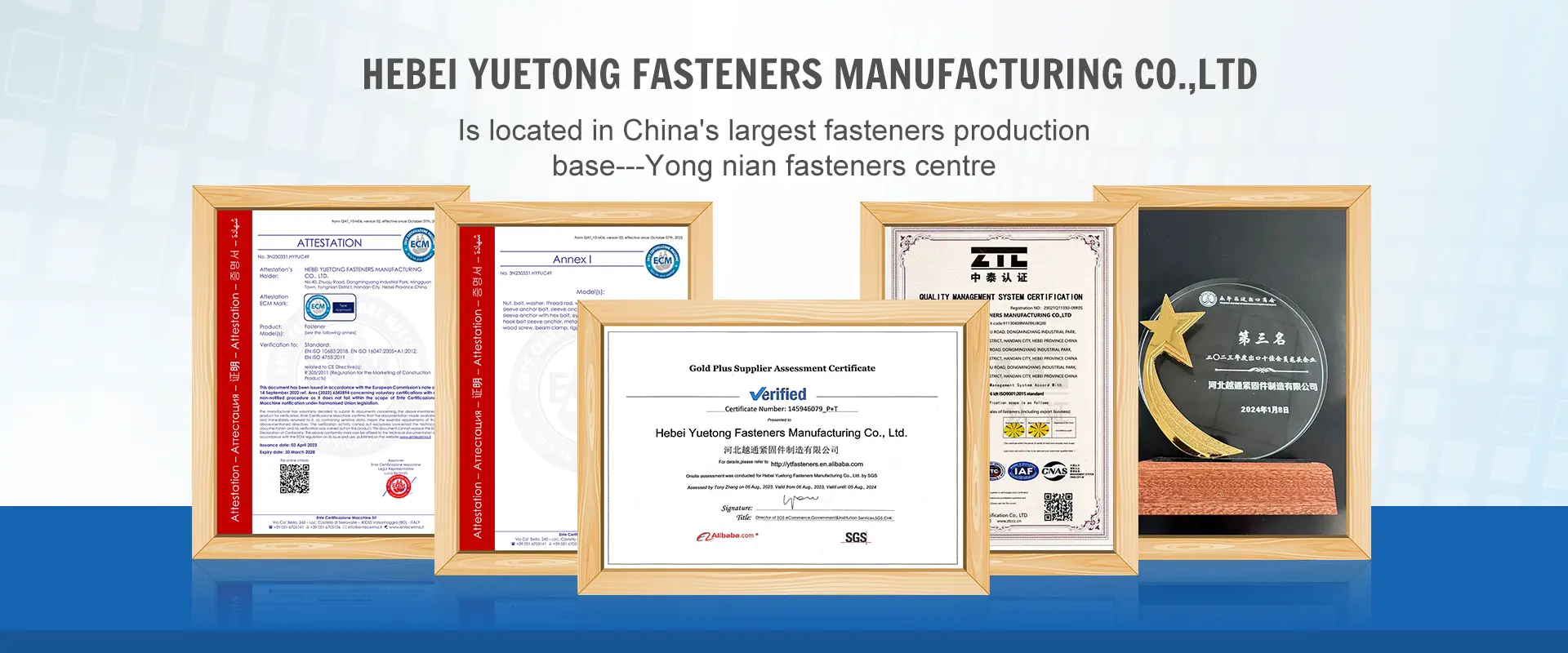Oct . 18, 2024 15:39 Back to list
Guide to Choosing and Using Hexagon Lock Nuts for Secure Fastening
The Hexagon Lock Nut A Crucial Component in Modern Engineering
In the world of engineering and mechanics, the fasteners we choose can make a significant difference in the performance, safety, and reliability of structures and machines. Among these fasteners, the hexagon lock nut stands out as an essential component, offering a robust solution to common issues related to vibration, loosening, and joint integrity.
What is a Hexagon Lock Nut?
The hexagon lock nut is a type of fastener characterized by its hexagonal shape, allowing it to be easily tightened and loosened using standard tools like wrenches. Its primary function is to secure bolts and screws in place, preventing them from loosening over time due to vibrations or dynamic loads. This is particularly important in applications involving machinery and vehicles, where stability and safety are paramount.
Design and Features
Hexagon lock nuts come in various designs that enhance their locking capabilities. These include features such as
1. Nylon Insert Often referred to as a nylock nut, this design incorporates a nylon insert at the top of the nut. When tightened, the nylon creates friction against the bolt threads, effectively locking it in place.
2. Serrated Flanges Some hexagon lock nuts have serrated or toothed flanges that grip the surface of the joint material. This design is especially useful in preventing loosening under vibration, as the serrations bite into the mating surface.
3. All-Metal Construction All-metal lock nuts, like prevailing torque nuts, achieve their locking action through deformation. The nut is slightly smaller than the bolt, creating friction when tightened, which prevents it from loosening due to vibration. This type is particularly advantageous in environments that experience extreme temperature fluctuations where nylon may degrade.
hexagon lock nut

Applications
The versatile nature of hexagon lock nuts makes them suitable for a wide range of applications. They are commonly found in
- Automobiles Secure critical components, including engine parts and transmission systems, where failure due to loosening could lead to hazardous situations. - Aerospace Use in aircraft assembly, where reliability and safety are crucial; even minor vibrations at high altitudes can lead to catastrophic failures. - Construction Applied in structural engineering to secure beams, girders, and other components in buildings and bridges. - Industrial Machinery Employed in various equipment where continuous operation and maintenance are key factors.
Advantages
One of the main advantages of hexagon lock nuts is their ability to maintain joint integrity over time. Unlike regular nuts that can loosen due to vibrations, lock nuts resist this motion, thereby enhancing the longevity and reliability of mechanical assemblies. Additionally, their ease of use and compatibility with standard tools simplifies installation and maintenance processes.
Furthermore, the availability of different designs allows engineers to select the most suitable type of lock nut for specific applications. For instance, the use of nylon insert nuts in low-temperature environments provides an excellent balance between strength and flexibility.
Conclusion
In summary, the hexagon lock nut is a vital element in the realm of fasteners, providing essential benefits in terms of security and reliability. Their specialized designs cater to the unique requirements of various applications, ensuring that components remain tight and secure even in the face of significant vibrations and external forces. As engineering technology evolves, the importance of such reliable components cannot be overstated, making hexagon lock nuts a cornerstone in the construction and machinery sectors.
In a world where safety and efficiency are paramount, investing in quality fasteners like hexagon lock nuts is not just a choice; it is a necessity for engineers, manufacturers, and anyone involved in the assembly of mechanical systems.


